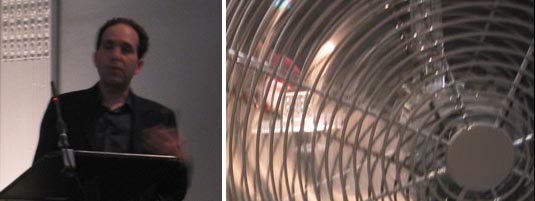

 subscribe
subscribeTo conquer new votes, politicians use from YouTube, communities at Orkut up to the creation of new icons for MSN
Originally published at “Estadão†Newspaper, São Paulo, Brazil (08/2006) by MaurÃcio Moraes and Silva
Translated by Nako (Google translates wasn’t good at all!)
There was time when Internet electoral campaigns could were restricted to simple homepages with candidate’s proposals. With their eyes open to the potential of the Net, not to mention cutting down costs, many politicians decided to focus their investments in new tools to get more votes in the upcoming election. Online guerrilla marketing includes uploading videos to YouTube, adding voters and friends to Orkut communities, using IMs among other props.
Chairman of the Senate Committee on Commerce, Science, and Transportation
A member of the Senate for 37 years, Ted Stevens is Alaska's senior Senator. Stevens' tenure in the Senate makes him the fourth-most senior member among his colleagues, and first among Republicans. Stevens holds the position of Senate President Pro Tempore. He also is the Chairman of the Senate Committee on Commerce, Science, and Transportation, which has oversight of the Departments of Commerce and Transportation. In addition, the Committee's broad jurisdiction covers issues including telecommunications, fisheries, oceans and maritime policy, the Coast Guard, aviation (including the Transportation Security Administration), rail, highway safety, global climate change, interstate commerce, space, science, technology, economic development, trade, tourism, consumer issues, product safety, and sports.

Scott Snibbe's exhibition Body, Space and Cinema, at the ICA is a retrospective of his work which spans nearly 10 years.
What I found interesting about Scott Snibbe is the user-friendliness of his work, which can be appreciated on many different levels. On the one hand you have its simplicity, inviting child-like play; on the other hand you have its philosophical and phenomenological roots which gives his work more depth. Ultimately, this means his work is accessible to all. As he later confirms, the most important thing for him is in engaging as many people as possible.
NEW SEARCH IN THE NEW WORLD ! www.zofox.com :: Zofox Advertising
It does not matter whether you believe in the future or not – the future will come, want it or not. But the formation of the future is in your hands!
Zofox is a Future Interactive Portal, which is designed by the wish of internet visitors.
MAzine puts media arts centre stage
Please discuss all aspects of the node.london 2006 season of media arts here. You just need to register first. If you want to start a new forum topic click 'create content' and away you go.
 |
||
 |
> - - - - - - - - < |
 |
A collaborative text written by Marc Garrett and Ruth Catlow, for "Media Mutandis: A Node.London Reader" (to be published in February 2006)
There is a Sufi fable in which a group of foreigners sit at breakfast, excitedly discussing their previous night’s exploration. One starts saying “…and what about that great beast we came across in the darkest part of the Jungle? It was like a massive, rough wall.†The others look perplexed. “No it wasn’t!†says one, “It was some kind of pythonâ€. “Yeah…†another half-agrees, “…but it also had powerful wingsâ€. The shortest of the group looks bemused- “well it felt like a tree trunk to me.â€
This fable aptly illustrates many aspects of the NODE.London experience. The name, which stands for Networked Open Distributed Events in London [1], indicates the open, lateral structure adopted to develop a season of media arts. It is intentionally extensible, suggesting possible future NODE(s).Rio, .Moscow, .Mumbai etc. As participants/instigators in the project’s ongoing conceptualization and praxis, we are just two individuals positioned on the interlaced, scale-free networks of NODE.L (more on these later). As such, our descriptions of this collectively authored project are inevitably incomplete and contestable, with a complete picture emerging only in negotiation with others.
At time of writing we are between the two key milestone events of NODE.L: October’s ‘Open Season’ of conferences (with its focus on media activism) and the Season of Media Arts, planned for March 2006 (which will feature distributed media arts projects, exhibitions and events). Through these events NODE.L offers a rare chance to identify shared purposes, philosophies, resources (such as licenses and tools for knowledge sharing) and common vocabularies between the media arts and tech-orientated, media activist communities.
I recently came across a movie about "Trusted Computing" that in my opinion is worth mentioning here.
The basic message is "why trust the industry if they do not trust their customers?" The movie is nicely animated and obviously origins in the anti tcpa movement. By Benjamin Stephan and Lutz Vogel
(Their server is a bit slow, so I have put a copy of the medium size file on the MA Rave College network, however, you can also use the torrent file.)
(by christoph burgdorfer)
Timeframe: 2 to 5 years from now.
A couple of days ago, Google launched its new service "Google Reader" which is basically a RSS aggregator. I do not think, this is a coincidence. I believe that Google has realized that at some point, everybody will use his personal news feeds to get informed rather than just checking up a few news sources on a regular base. This will lead into a weakening of the current information sources' positions and support the possibility to get a wider variety and more independent opinions on topics of interest.
The way most of us read the news today has a long tradition. It originated in the 15th Century with the invention of the printing with movable letters by Johannes Gutenberg. Since then, the format has not much changed, we still get the newspapers printed out black on grey paper. At some point, there were pictures, then they became colorful, but let's face it, that doesn't make much of a difference, does it?